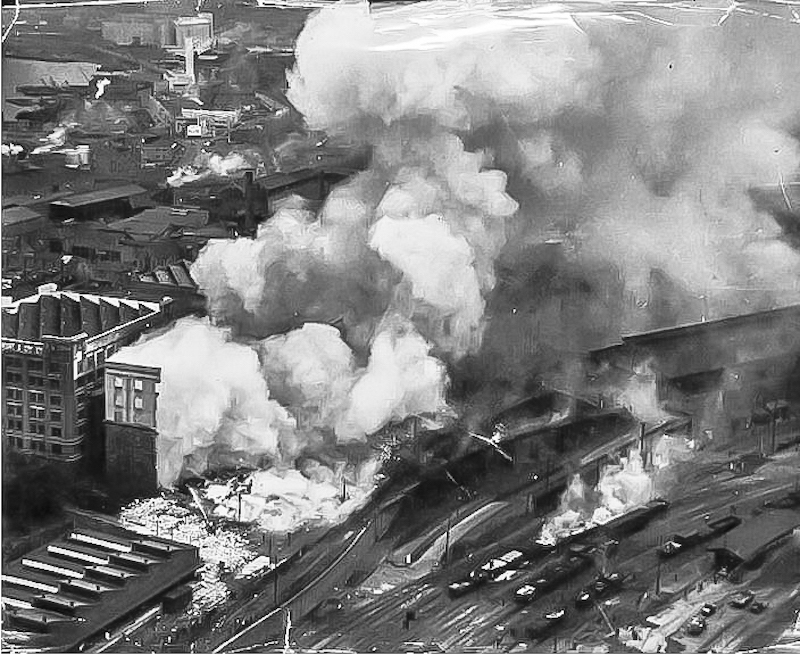Events > Fire in Goldsbrough Mort Wool Store
Goldsbrough Mort No.1 store, fire 1935
Fire at the Goldsbrough Mort Wool Store, 1935
Fire in Goldsbrough Mort Wool Store
Wool store fires were especially dangerous. Lanolin in the wool seeped into the wooden floors, making them highly risky. Arson was a constant anxiety: two attempts were made on the Country Produce Selling Company in 1922 (Wyalong Advocate, 31 March 1922). Two separate fires broke out on the top floor. Two watchmen found documents and papers alight and quenched the blaze with up-to-date chemical emergency equipment. Their quick response saved the company £500,000.
Of the many fires that destroyed wool stores, the biggest destroyed the Goldsbrough Mort building in September 1935. The fire brigade was called, but it arrived to find the eight-storey building engulfed in flames. All Metropolitan brigades were summoned - 20 engines and 172 firefighters with fifteen pumpers – but could not save the structure. A coroner was amazed that “within half an hour a building eight storeys high and 300ft. by 100ft. should be just a mass of flame.” A fireman was killed, the building was destroyed, and the wool smouldered for 9 days. The best that the fire brigade could do – and it was an achievement – was to prevent the fire from spreading.
A neighbour recalled that “a pool was constructed of canvas at Pyrmont and Allen Streets. Pipes were connected to the water mains and the brigade was able to maintain water at the upper level of the fire.” Police sent children home from school in case they had to be evacuated. Meanwhile “balls of wool lifted by the wind and still burning floated down on our houses and my mother’s brother climbed up on the roof and dislodged what had landed.”
No cause was identified, but a specialist in these fires thought the likeliest explanation was a cigarette butt. (Glen Innes Examiner, 26 October 1935).
The fire lasted for days, rebuilding took months, but litigation lasted for years before the competing claims for insurance were settled, first in local courts, and eventually in the Privy Council. (The Land, 12 May 1939).
Related Items
Further Readings


